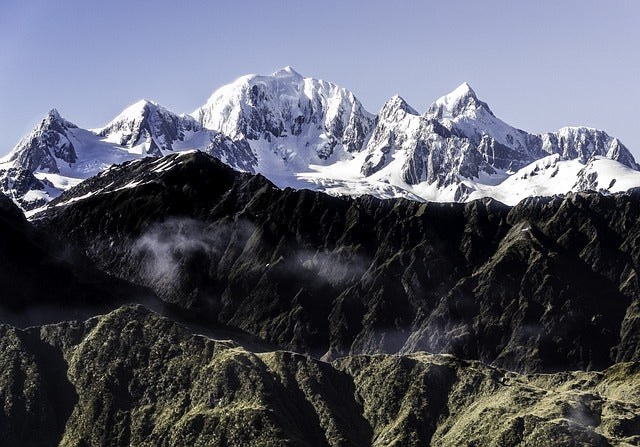
The 10 hiking essentials
Hiking is a wonderful way to connect with nature, but being well-prepared is essential for a safe and enjoyable experience. Whether you’re a seasoned hiker or a beginner, having the right gear can make all the difference. In this blog, we’ll delve into the ten hiking essentials that every outdoor enthusiast should carry, ensuring you’re prepared for any situation on the trail.
1. Navigation Tools
Understanding where you are and where you’re going is crucial for any hike.
Why You Need Navigation Tools:
- Safety: Helps prevent getting lost in unfamiliar terrain.
- Efficiency: Allows you to plan your route effectively.
What to Include:
- Map: A detailed topographic map of the area.
- Compass: A reliable compass to assist in navigation.
- GPS Device: A handheld GPS or a smartphone with navigation apps can provide real-time positioning.
2. Water Supply
Staying hydrated is vital for maintaining energy levels and preventing dehydration.
Why You Need Water:
- Health: Dehydration can lead to fatigue, confusion, and more severe health issues.
- Performance: Hydration boosts physical performance on the trail.
What to Include:
- Water Bottle or Hydration Pack: Ensure you have enough water for the duration of your hike, typically 2 liters or more.
- Water Purification: Consider tablets, filters, or UV purifiers for refilling from natural sources.
3. Snacks and Food
Keeping your energy levels up is crucial, especially on longer hikes.
Why You Need Snacks:
- Sustenance: Provides quick energy boosts and keeps you fueled throughout the hike.
- Morale: A well-timed snack can lift your spirits on challenging trails.
What to Include:
- Energy Bars: Lightweight and nutrient-dense options.
- Trail Mix: A mix of nuts, dried fruit, and chocolate offers a good balance of carbs and fats.
- Fruits: Apples or bananas are portable and refreshing.
4. First-Aid Kit
Accidents can happen, even on well-marked trails.
Why You Need a First-Aid Kit:
- Preparedness: Being able to treat minor injuries can prevent them from becoming serious.
- Peace of Mind: Knowing you have supplies for emergencies can enhance your overall experience.
What to Include:
- Adhesive Bandages: For cuts and blisters.
- Antiseptic Wipes: To clean wounds.
- Pain Relievers: Such as ibuprofen or acetaminophen.
- Personal Medications: Any specific medications you may need.
5. Clothing Layers
Weather can change rapidly in the outdoors, making proper clothing essential.
Why You Need Layers:
- Adaptability: Allows you to adjust to varying temperatures and conditions.
- Comfort: Proper layering keeps you warm, dry, and comfortable.
What to Include:
- Base Layer: Moisture-wicking shirts and underwear to keep sweat away from your skin.
- Insulating Layer: Fleece or down jackets for warmth.
- Outer Layer: A waterproof and breathable jacket to protect against rain and wind.
6. Footwear
Your choice of footwear can significantly affect your hiking experience.
Why You Need Proper Footwear:
- Support: Proper shoes provide stability and support on uneven terrain.
- Protection: Protects your feet from injuries, rocks, and weather.
What to Include:
- Hiking Boots or Shoes: Waterproof options are ideal for wet conditions. Ensure they have good traction.
- Socks: Moisture-wicking, padded socks prevent blisters and keep your feet dry.
7. Shelter
Having a shelter can be crucial for longer hikes or in emergencies.
Why You Need Shelter:
- Protection from the Elements: Provides refuge from rain, wind, and sun.
- Comfort: A place to rest can enhance your hiking experience.
What to Include:
- Emergency Space Blanket: Lightweight and compact, it retains body heat in emergencies.
- Tarp or Bivy Sack: Offers additional protection against rain and wind if you need to stay put.
8. Multi-Tool or Knife
A multi-tool can serve various purposes on the trail.
Why You Need a Multi-Tool:
- Versatility: Useful for repairs, food preparation, and first-aid needs.
- Convenience: Having multiple tools in one compact device saves space.
What to Include:
- Multi-Tool: A tool that includes a knife, screwdriver, scissors, and can opener.
- Fixed-Blade Knife: Useful for more substantial tasks, such as food prep or cutting rope.
9. Lighting
Daylight can fade quickly, especially in dense woods.
Why You Need Lighting:
- Visibility: Ensures you can see and be seen in low-light conditions.
- Safety: Helps prevent accidents while navigating trails after dark.
What to Include:
- Headlamp or Flashlight: A headlamp is preferable for hands-free use.
- Extra Batteries: Always pack extra batteries to ensure your light source stays functional.
10. Emergency and Safety Gear
Preparation for emergencies is essential, especially in remote areas.
Why You Need Safety Gear:
- Preparedness: Increases your chances of dealing with unforeseen situations.
- Survival: Some items can help you survive longer if you’re stranded.
What to Include:
- Whistle: To signal for help.
- Firestarter: Waterproof matches or a lighter for starting a fire.
- Signal Mirror: Useful for signaling rescuers.
Conclusion
Being prepared with the ten hiking essentials can significantly enhance your outdoor experience and ensure your safety on the trail. Each item serves a specific purpose, from navigation to hydration and safety. Regardless of your hiking experience, investing time and resources into packing these essentials will make your adventures more enjoyable and secure. Remember, the key to a successful hike lies not just in the journey, but in being well-prepared for whatever nature throws your way. Happy hiking!





